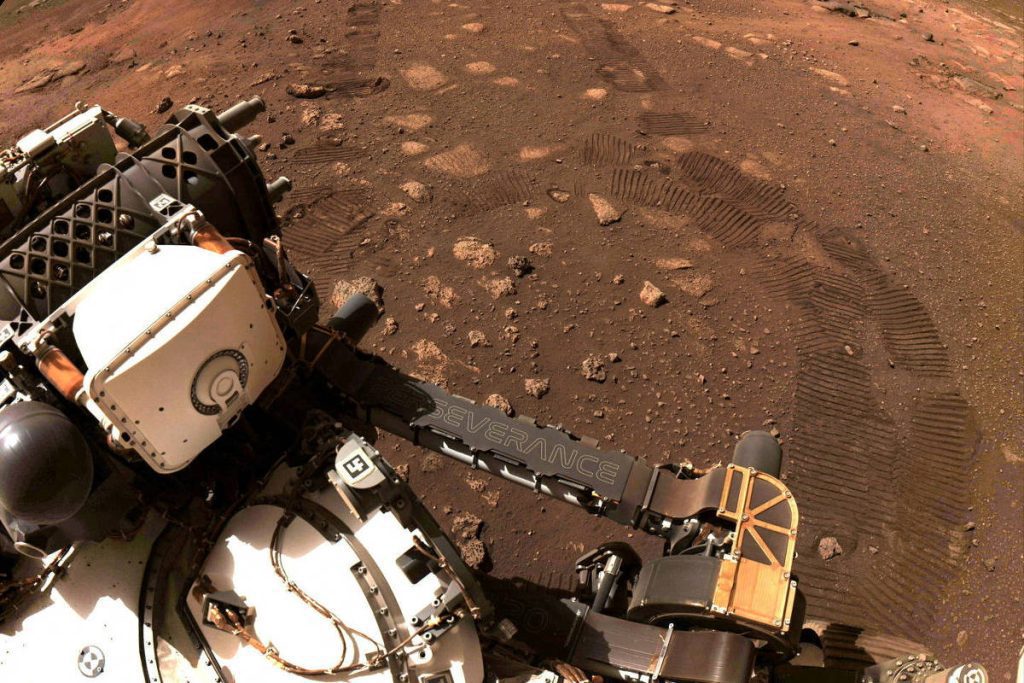Samples drilled by NASA’s Perseverance spacecraft on Mars reveal the geology of a crater that scientists believe may have harbored microbial life billions of years ago, including surprises about the nature of the rocks there.
The samples, which were taken by a car-sized six-wheeled robot and stored for transport to Earth in the future for further study, showed that the rocks from four locations within the Jezero Crater are igneous—formed by cooling magma. The rocks also show evidence of weathering through exposure to water, another sign that the cold, dry planet Mars has long been hot and humid.
Scientists had thought that the rock, which formed about 3.5 billion years ago, may have been a sedimentary formed in the form of mud and sand deposited on the bottom of a lake.
The geochemist said, “In fact, we found no evidence of sedimentary rocks where the probe discovered the floor of the crater, despite the fact that we know that the crater once housed a lake where the sediments were deposited. These sedimentary deposits must have eroded away. “. Kenneth Farley of the California Institute of Technology, lead author of one of four studies published in Science and Science Advances describing the geology of the crater.
Perseverance arrived at Mars in February 2021 and has been actively working on the Jezero Crater ever since, using an array of instruments, as scientists investigate whether Earth’s closest neighbor had conditions favorable for life.
It collects rock samples the size of chalk in small tubes to be retrieved by a spacecraft in 2033 and return to Earth for further examination, including biosignatures – indicators of life.
Jezero crater is 45 km wide and is located north of the Martian equator. The area appears to have had abundant water and was home to a river delta, where river channels extended over the crater wall to form a large lake. Scientists suspect that the crater may have harbored microbial life, with evidence possibly in the bottom of the lake or rocks along the shores.
Perseverance is now collecting samples in the delta region.
Igneous rocks have been found in the crater of the volcano reacting with water, producing new minerals and depositing salts, although this water apparently wasn’t very abundant or hadn’t been around for a long time – possibly groundwater. The presence of water suggests that this may have been a habitable environment at the time, the researchers said.
“We collected samples that will be returned to Earth, which should provide definitive evidence of what species, if any, organisms that inhabited the rocks at the bottom of the Jezero Crater when they interacted with the water,” said Yang Liu, a planetary sampling scientist. at NASA Jet Propulsion and lead author of one of the studies.
The four samples were obtained by digging in two areas, one called Sitta and the other Moaz. Sittah rock appears to have formed underground by the slow cooling of a thick layer of magma. The Maaz rocks may have cooled relatively faster in the upper layer of subterranean magma or after a volcanic eruption at the surface. In any case, any layer of rock that has covered these areas since then has been eroded, either by water or wind.
The samples taken from Setah were coarse-grained igneous rocks containing the mineral olivine, Liu said, noting that three Martian meteorites found on Earth had the same composition.
Examining samples on Earth can reveal when the rock formed and give a more consistent answer about when water was present on Mars. Liquid water is an essential component of life.
“Understanding when and when the climate on Mars allowed liquid water to settle is central to the larger questions we are trying to address through this mission and the samples taken – about whether life existed on Mars and when there was billions of years ago,” he said. Geochemist and study co-author David Schuster of the University of California, Berkeley.
Translated by Luis Roberto M. Gonsalves



![[VÍDEO] Elton John’s final show in the UK has the crowd moving](https://www.lodivalleynews.com/wp-content/uploads/2023/06/Elton-John-1-690x600.jpg)


More Stories
The Director of Ibict receives the Coordinator of CESU-PI – Brazilian Institute for Information in Science and Technology
A doctor who spreads fake news about breast cancer is registered with the CRM of Minas
The program offers scholarships to women in the field of science and technology